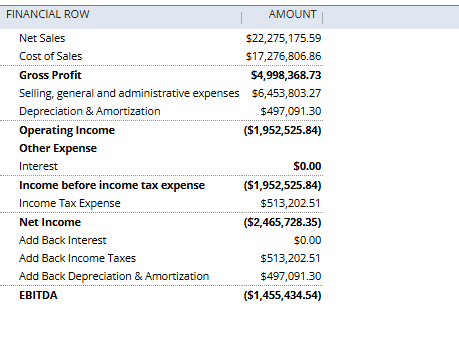EBITDA stands for Earnings Before Interest, Taxes, Depreciation, and Amortization. An EBITDA report is a financial report that provides insights into a company’s operating performance by calculating its EBITDA. This metric is often used by businesses and investors to assess a company’s profitability and compare it with other companies, as it excludes the effects of financing and accounting decisions.
Components of an EBITDA Report:
- Earnings (Net Income):
- The starting point is usually the net income, which is the company’s total profit after all expenses, including interest and taxes, have been subtracted from total revenue.
- Interest:
- Add back any interest expenses. These are the costs of any debt the company has, which can vary significantly between companies and thus are excluded to provide a clearer picture of operational performance.
- Taxes:
- Add back any taxes. These can also vary due to different tax rates and laws, and removing them helps in comparing profitability between companies in different tax jurisdictions.
- Depreciation:
- Add back depreciation expenses. Depreciation is a non-cash expense that represents the reduction in value of assets over time.
- Amortization:
- Add back amortization expenses. Like depreciation, amortization is a non-cash expense, but it typically relates to intangible assets such as patents or goodwill.

Following is the summary of the report headers used in this report :-
- Net Sales – Sum of all income account types
- Cost of Sales – Sum of all cost of goods sold account types
- Gross profit = Net Sales – Cost of Sales
- Selling, general and administrative expenses – Sum of all expense account types without ITDA accounts
- Depreciation & Amortization – Sum of depreciation & amortization accounts in expense account type.
- Operating Income = Gross Profit – Selling, general and administrative expenses – Depreciation & Amortization
- Interest – Sum of interest accounts in expense account type.
- Income before income tax expense = Operating Income – Interest
- Income Tax Expense – Sum of tax accounts in expense account type.
- Net Income = Income before income tax expense – Income Tax Expense
- Add Back Interest – Sum of interest accounts in expense account type.
- Add Back Income Taxes – Sum of tax accounts in expense account type.
- Add Back Depreciation & Amortization – Sum of depreciation & amortization accounts in expense account type.